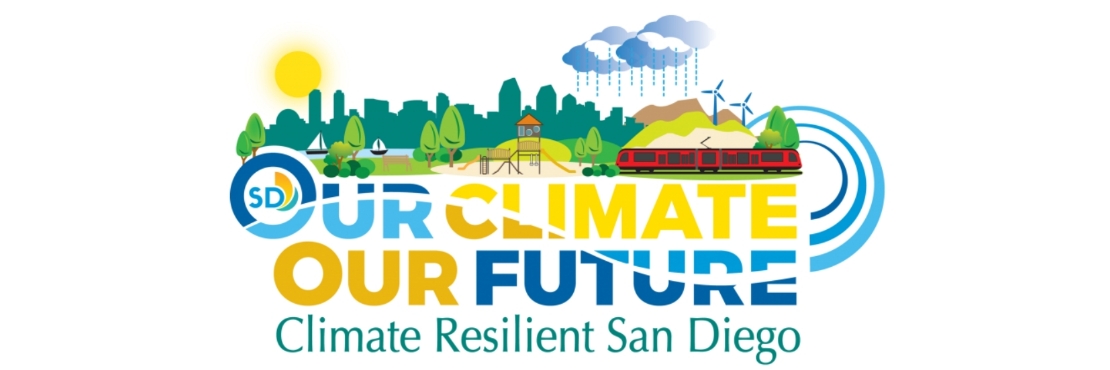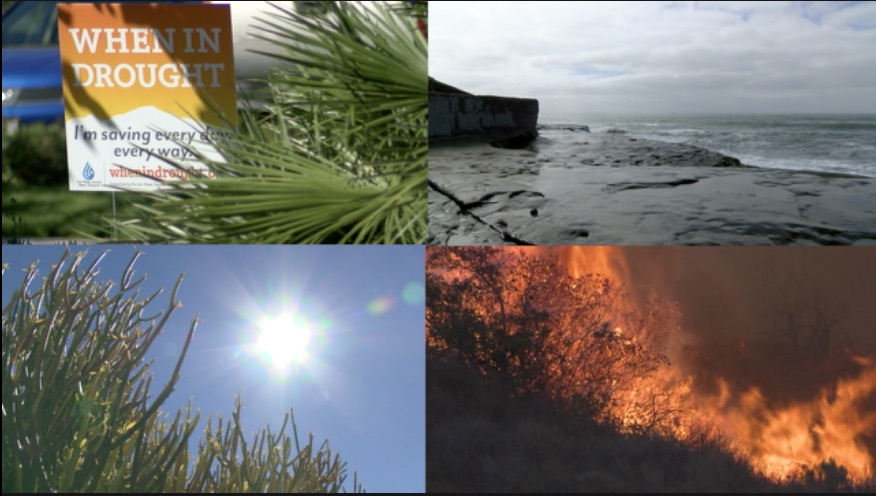Leah Pezzetti of San Diego KGTV writes:
"When we know we are faced with a changing climate, how do we adapt? And not only how do we adapt but how do we make our communities and our lives even better when we’re looking at investments to address climate change," said Heidi Vonblum, Deputy Director with the City of San Diego's Planning Department.
The City of San Diego is getting ready to release a climate action plan that includes lists of ideas on how the city can help tackle climate change.
The Climate Resilient SD plan has identified four primary climate change hazards that pose a risk to San Diego: sea-level rise, flooding/drought, extreme heat, wildfires. The plan outlines various actions that can be taken to combat the four different categories, plus any costs and also pros/cons.
Sea level rise adaptation strategies include:
- Regulation Options: Updating development regulations, zoning, permitting processes and standards to reduce exposure of development to climate changes hazards and improve ability to respond to climate change hazards.
- Beach Nourishment: Sand is purchased and added to City beaches. New sand must be purchased on a regular basis to maintain the current width of the beach and to protect against erosion.
- Nature-Based Solutions: Nature-based solutions use natural shoreline protection methods to protect coastal areas from sea-level rise, coastal flooding and erosion. Examples include living shorelines, habitat restoration, native plantings and dune restoration, which provide many additional benefits such as providing habitat or carbon sequestration.
- Sea Wall: Sea walls are hard, vertical structures, typically made of concrete, that are designed to protect against sea-level rise. Sea walls can result in long-term beach erosion.
- Land Use Change: Land use change could include the shift to less intensive land uses in areas vulnerable to sea-level rise and flooding, such as converting City-owned properties into green space.
Extreme rainfall and drought strategies include:
- Reactive Maintenance: When an extreme weather event is expected, City crews clean storm drains and culverts, distribute sandbags, close roadways, increase maintenance staff and signage as needed.
- Raise Roadways: The road surface level is raised to a higher elevation in areas that routinely flood during extreme weather events to maintain access to the road.
- Green Infrastructure: Green infrastructure reduces flooding and runoff by capturing and filtering rain. Examples are street trees, curb cuts, bioswales and permeable surfaces.
- Infrastructure Relocation: City assets are moved to alternate areas that are less exposed to climate hazards.
- Community Engagement: Community engagement includes informational outreach on drought-tolerant landscaping, incentives and guidance on green infrastructure or rainwater capture, and flood response.
Extreme heat strategies include:
- Cool Zones: Cool zones are community buildings that provide an air-conditioned space that the public can access during extreme heat events.
- Shade structure: Shade structures include the installation of shade sails, canopies or other features that provide additional shade cover to public spaces and help cool the surrounding area.
- Tree Canopy Cover: Tree canopy cover is the coverage of trees’ leaves and branches that provides shade and cooling to the surrounding area, which also helps clean the air and absorb rainwater runoff.
- Green Roof: Green roofs convert existing rooftops into roofs covered with live plants. Green roofs can absorb sunlight and heat and reduce ambient temperatures by several degrees, while also providing other aesthetic and environmental benefits.
- Cool Roofs: Cool roofs transform existing rooftops to roofs made of light-colored materials that reflect sunlight and heat back into the atmosphere. Cool roofs can keep ambient temperatures much cooler than traditional roofs.
Wildfire adaptation strategies include:
- Public Outreach Campaigns: Public outreach campaigns provide information to communities on wildfire prevention and response. Outreach can help reduce the ignition of wildfires and prepare communities to evacuate quickly if needed.
- Land Use Planning: Smart land-use planning can help reduce the risk of wildfires and increase community resilience. Land-use planning can include: landscaping regulations, building codes for fire-safe structures, development restrictions in high wildfire risk areas or design standards for better safety, such as secondary access.
- Hardening of Buildings/Assets: Buildings are upgraded or designed with fire-resistant materials or include fire-resistant barriers around them to make it more difficult for fires to spread and to protect the building.
- Post-Fire Treatments: Post-fire treatments can include seeding or mulching. These treatments can reduce runoff and erosion and improve ecosystem health.
- Vegetation Management: Vegetation management reduces the amount of vegetation growing in high wildfire risk areas through actions like invasive brush removal, tree maintenance and removal projects, and controlled burns. When repeated on a regular basis, such maintenance can make fires easier to manage or suppress.
Read more: City of San Diego Releasing Plan to Tackle Climate Change
 Greenroofs.comConnecting the Planet + Living Architecture
Greenroofs.comConnecting the Planet + Living Architecture







California Climate Action Plan Under Scrutiny – Carbon Herald
[…] key city in California – San Diego recently announced its own climate action plan called the Climate Resilient SD plan. It outlines four primary climate […]